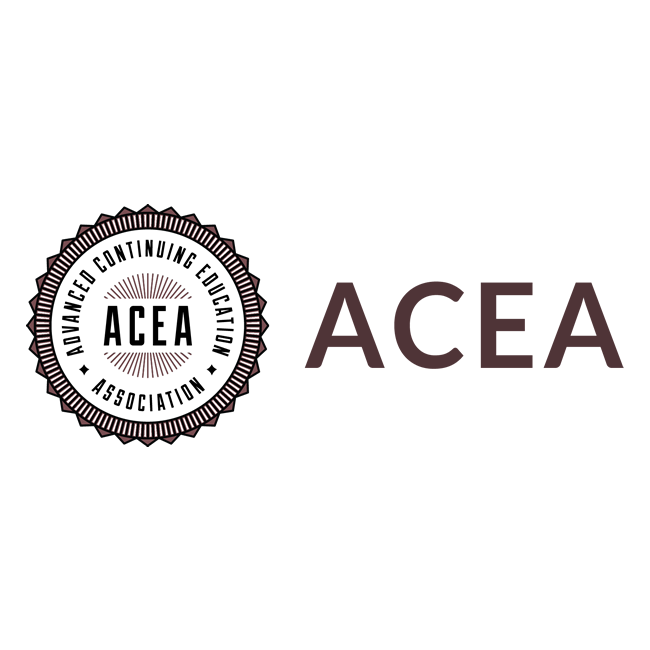Preventing Workplace Violence & Harassment in Healthcare
An impactful on-demand video series offering continuing education (CME & CE) credit for compliance training.

Meets the New York Requirement!
Every employer in New York is now required to implement Sexual-Harassment policies and training.
Our program, featuring two heads of security of New York hospitals, meets this requirement – tailored to the healthcare setting.
Three Accredited Modules – Go Beyond Compliance.
Protecting your institution with a single training event simply isn't enough and, unfortunately, much of the traditional training over the past 30 years hasn't worked.
Enhance or replace your compliance training with three new powerful modules:

I. Sexual Harassment
Prevent, identify, and react to many types of harassment in the medical workplace. State and federal regulation forbid this harassment which you can stop today.

II. Bullying
Discuss the spectrum of bullying and shaming in the healthcare workplace, the negative effects on care, and actions that can be taken against such behavior.

III. Workplace Violence
Describe the physical and psychological factors surrounding a violent environment in healthcare and how to prevent and react to escalated and dangerous situations.
An Impactful Program
The idea for Workplace Harassment & Violence in Healthcare education came from the staggering discovery that health care environments are the most dangerous non-government places to work.

During my 50 years in healthcare, I have had to deal in my organizations with sexual harassment and workplace violence. I discovered in a client's organization that staff was very concerned with the amount of bullying and retaliation which affect medical outcomes. My highest priority is improving the clinical quality and safety for all patients which is what makes this training so essential.

As security directors, we constantly worry about issues that threaten the safety and security of our workplaces... No issue can be more unsettling than the daily challenges of preventing and responding to acts of violence in the workplace.

Protect Your Organization
Learn how you can prevent expensive litigation, help boost staff morale, and improve care:
Schedule Demo Register Now
Continuing Education Credit (CE/CME)
As a unique bonus, physicians, nurses, PAs, and other clinicians can claim CE/CME credit: up to 1.0 AMA PRA Category 1 Credit™ and 1 CEU contact hour for nurses is available for three modules which are appx. 15 min each.
Let's Face The Facts
Violence, bullying, and harassment are real and present dangers in the healthcare workplace
Forced Resignations
Top healthcare executives are being forced to resign due to harassment issues. Even when they are not involved directly, these leaders have improperly prevented and handled these cases which result in resignations.
6 in 10 Experience Harassment
60% of clinicians report experiencing sexual harassment within a year's time. Lack of understanding and reporting require clear direction in order to overcome such widespread issues.
$27k-$103k Losses Per Person
According to OSHA, cases of violence, bullying, and/or harassment, can cost an employer between $27,000-$103,000 to replace a single clinician.
2nd Most Violent Profession
Surpassed only by law enforcement, healthcare is the second most violent profession in the U.S.. According to the U.S. Bureau of Labor Statistics, 45% of all non-government workplace violence incidents occur in healthcare.
Medical Errors
In the Joint Commission "Sentinel Alert" it was found that that “intimidating and disruptive behavior can foster medical errors.” Secondary consequences of this behavior cripple quality of care for patients.
Only Half Reported
Caregivers put their own safety and health at risk to help a patient, considering it "part of the job." As a result, more than 50% of all incidents of sexual harassment in healthcare go unreported.
A STRATEGIC INVESTMENT
*Bulk Discounts Available
- CE/CME accreditation
- On-Demand video format
- Three accredited modules
- Seasoned law enforcement educators
- Discounts for organizations
Third-Party Efficacy
Have you been in a room with a co-worker teaching harassment? It's not always fun. Having third-party online content enables your in-person training to be more interactive than informational.
Entire Organizations Covered
Models covering key areas are actionable not only for individuals to utilize on a day-to-day basis, but also for ongoing organizational support. Clinicians, administrators, and executives can all benefit.
Convenient Online Format
Your staff is busy. We understand. That's why each of our three modules are only around 15 minutes. Each can be viewed from any internet device including mobile phones and tablets.
Accredited and Proven
Clinicians can enjoy accredited continuing education (see accreditation details below). Four organizations have teamed up to bring you this world-class training.
Accreditation Statement
The goal of this activity is to reduce sexual harassment, bullying, and violence in the healthcare workplace. Doing this is aimed at improving the working environment for clinicians and patient care.
Educational Objectives
After completing this activity, the participant should be better able to:
- Identify, prevent, and react to sexual harassment in the medical workplace.
- Discuss of the types of workplace bullying, the negative effects on care, and actions that can be taken against such behavior.
- Describe the physical and psychological factors surrounding a violent environment in healthcare, prevalent types of workplace violence, and relevant organizations with resources and authority in the area.
- Explain where to run, who to fight, and how to hide to save lives in the case of potentially lethal physical violence.
- Robert W. Casazza: President, Metropolitan Healthcare Security Directors Association (MHSDA); Director of Security, NYU Lutheran Medical Center.
- Joseph Sweeney: Vice President, MHSDA; Director of Hospital Police, Bellevue Hospital.
- Dr. Tom Royer, MD: CEO Emeritus of CHRISTUS Healthcare; CEO and Partner, Royer-Maddox-Herron Advisors.
- Gary D Slack, PE: President, Healthcare Engineering Consultants.
- H. Jack Rutledge: President, National Healthcare ED.
SynAptiv designates this enduring material activity for a maximum of 1 AMA PRA Category 1 Credit™. Physicians should claim only the credit commensurate with the extent of their participation in the activity.
SynAptiv is an approved provider of continuing nursing education by the California Board of Registered Nursing. Provider approved by California Board of Registered Nursing, Provider # 16031 for 1 contact hour.
Disclosure Statement
SynAptiv ensures balance, independence, objectivity, and scientific rigor in all our educational activities. In accordance with this policy, SynAptiv identifies conflicts of interest with its instructors, planners, content managers, and other individuals who are in a position to control the content of an activity.
See the course website for full accreditation details.
Frequently Asked Questions
Is this a standalone program?
It is often said that a single training event is unlikely to change institutional behavior. This training may be the only one your staff would need, however, we suggest ongoing organizational support and practices within this program that can help create an a long-lasting environment of safety and respect.
What specific topics are covered?
We'd be glad to go through all of the contents with you – just click "schedule demo" above. You can also preview the course in the video on this page.
How will this help protect us from litigation and liability?
By engaging in this training and following the steps mentioned, you are helping increase your personal and organizational awareness of the issues covered. Consult your legal counsel for specific advice around navigating litigation and liability. Overall, traditional training has focused too much on liability and we aim to go beyond that to help foster organizational change and safety.
Is the course meant for individuals or groups?
Both! We're excited to say that both individuals, groups, and institutions can benefit from this essential training – plus the continuing education credits are a good bonus for individuals to complete their license requirements.
Who should be taking the course within our organization?
In order to set the standard, it is important for employees at all levels from facilities staff, clinicians, vendors, and executive leadership to participate and show equal interest in the important topics within this training.
One of Many Staggering Stories
A Surgeon was Slain and the Gunman Found Dead at Boston Hospital

Late morning on a typical Tuesday
After two shots
The signs were evident
Source: The Boston Globe. Image Source: David L. Ryan, Globe Staff
Course Preview
Active shooters, harassment, bullying, and other threats need to be prevented and handled correctly in our healthcare wordplaces. We're here to help.

Course Preview Video
After previewing, get a free quote or schedule a demo.
My highest priority is improving the clinical quality and safety for all patients which is what makes this training so essential.
Dr. Thomas Royer, MD
CEO Emeritus, CHRISTUS Health System
Get a free quote Schedule a demo


